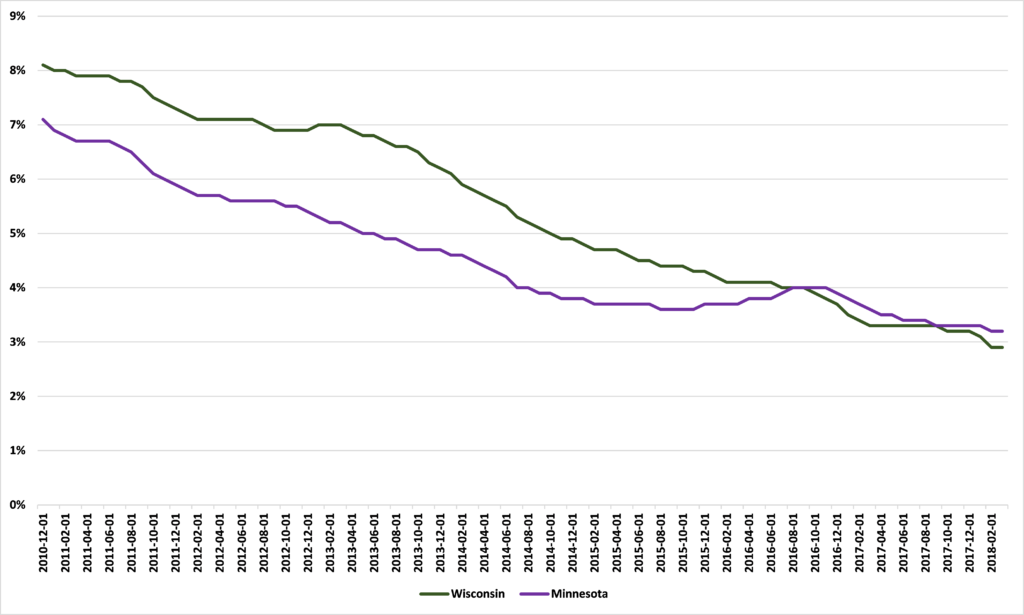The Economic Policy Institute’s report distorts the records on unemployment of Governors Dayton and Walker
Yesterday, I wrote about how the Economic Policy Institute had been, shall we say, ‘creative’ in the way that it had presented the facts of economic growth in Minnesota and Wisconsin since Governors Dayton and Walker took office in January 2011. After looking at GDP, I turned to the section on unemployment (page 8 in the report). Sadly, I found a similarly ‘creative’ presentation of the facts.
Walker has outperformed Dayton on reducing unemployment
The EPI says
Job growth is obviously the key for reducing unemployment—thus it is not surprising that Minnesota was arguably more effective at reducing unemployment than Wisconsin was throughout the recovery. As shown in Figure A, Wisconsin reached a higher unemployment peak in the wake of the recession than Minnesota, hitting 9.2 percent in January 2010 compared with Minnesota’s peak of 8.1 percent in June 2009. By December 2010, the two states were down to 8.1 percent (Wisconsin) and 7.0 percent (Minnesota), and seven years later, both states have reached effectively the same unemployment rate, at 3.0 percent and 3.1 percent, respectively.
Using data from the Bureau of Labor Statistics, we can see that Gov. Dayton inherited an unemployment rate of 7.1% and Gov. Walker inherited one of 8.1% (the figures for December 2010, the last month before they took office). Since then, as shown in Figure 1, Minnesota’s unemployment rate has fallen to 3.2% and Wisconsin’s has fallen to 2.9%. Simply put, Gov. Walker inherited an unemployment rate a full percentage point higher than Gov. Dayton did, and has got that down to a rate nearly a third of a percentage point lower. If we’re scoring, this is a clear win for Gov. Walker.
Figure 1 – Unemployment rates in Minnesota and Wisconsin, December 2010 to March 2018, %

Source: Bureau of Labor Statistics
But that is not how the EPI reports it.
However, the fact that they have arrived at the same place by December 2017 hides the fact that the path to get there was noticeably different. Minnesota was back at its prerecession (December 2007) unemployment rate of 4.7 percent by September 2013, fewer than three years after Governor Dayton took office. In contrast, it took until December of 2014—15 months later—for Wisconsin to reach its pre-recession unemployment rate of 4.8 percent.
This is incredibly misleading. In the race to these pre-recession levels of unemployment, 4.7% for Minnesota and 4.8% for Wisconsin, Gov. Walker was starting from a rate of 8.1% and Gov. Dayton was starting from a rate of 7.1%. The EPI takes no account of this handicap. In fact, since December 2010, Wisconsin’s unemployment rate has fallen by 5.2 percentage points and Minnesota’s has fallen by 3.9. The reduction in the unemployment rate has been faster in Wisconsin under Gov. Walker than it has in Minnesota under Gov. Dayton.
It is fun to compare neighboring states. Sometimes, it can even be useful. But the sort of distortion the EPI is guilty of in this report helps nobody.
John Phelan is an economist at the Center of the American Experiment.